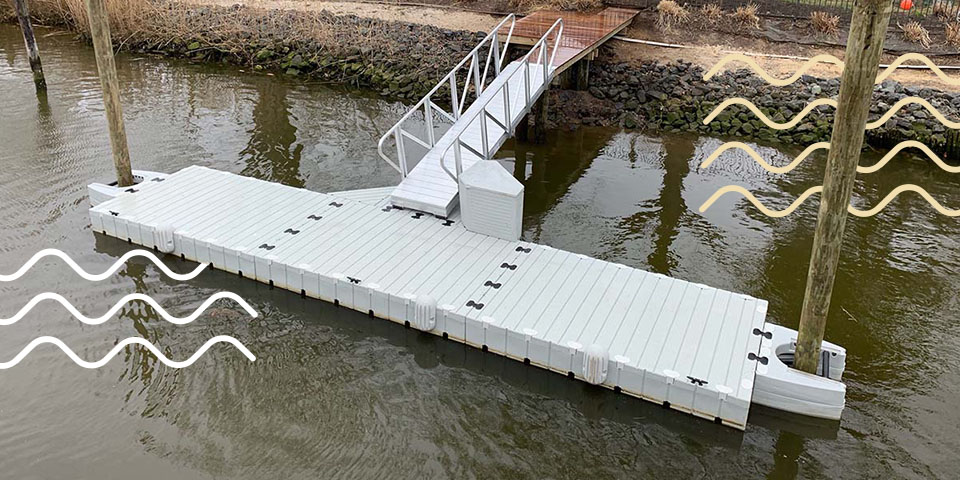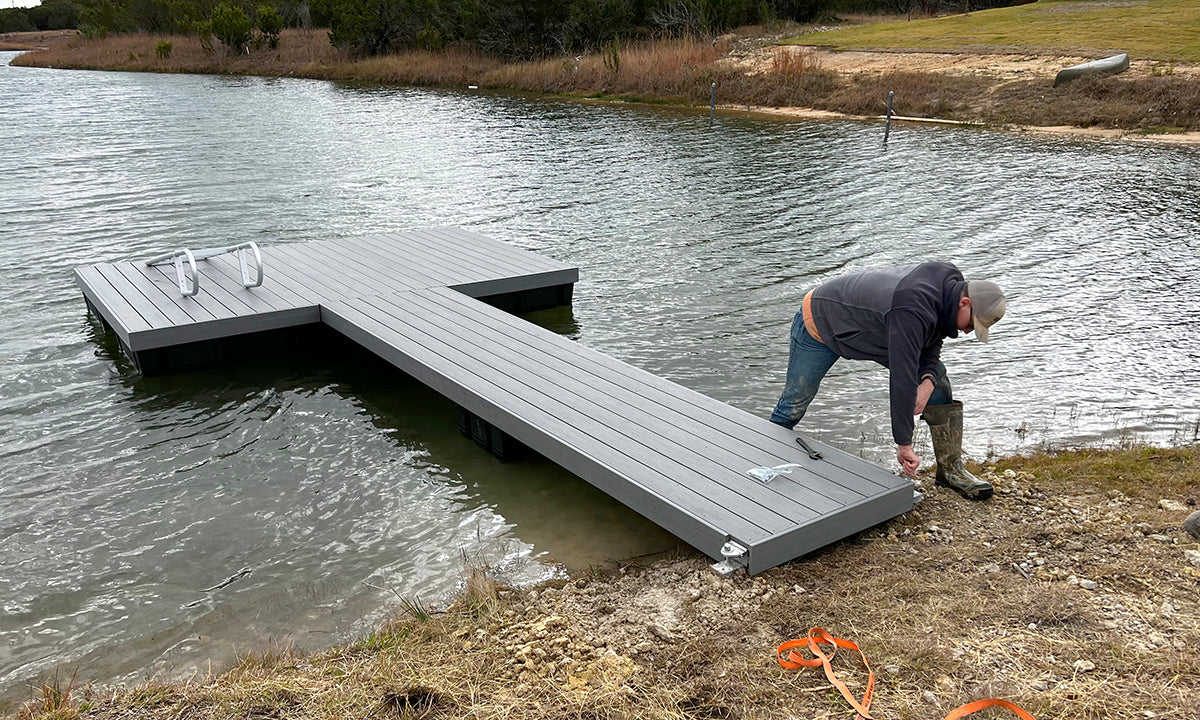Exactly How Floating Dock Company Experience Can Boost Your Waterside Experience
Exactly How Floating Dock Company Experience Can Boost Your Waterside Experience
Blog Article
Produce the Perfect Docking Remedy With Floating Docks
Floating docks existing a versatile solution for a variety of maritime needs, adapting perfectly to rising and fall water degrees and varied vessel kinds. Their modular nature allows for rapid installment and moving, yet the choice of appropriate materials and design features is essential for ensuring both functionality and visual charm. As we check out the essential components that add to the efficiency of floating docks, a number of crucial factors regarding stability and maintenance will emerge, raising questions concerning exactly how to optimize your docking experience. The succeeding discussion will certainly light up these vital factors to consider.

Benefits of Floating Docks
Floating docks offer numerous advantages that make them an optimal option for numerous maritime applications. Unlike dealt with docks, floating docks surge and loss with the tide, ensuring consistent accessibility for vessels.
In addition, floating docks are usually easier and quicker to install compared to conventional set structures. Their modular layout permits for simple setting up and disassembly, promoting maintenance and moving when needed. This flexibility is particularly beneficial for short-lived applications or in atmospheres where problems might alter.
Floating docks also tend to be extra eco friendly, as they reduce disturbance to the seabed and surrounding water environments. Their buoyant nature lowers the danger of damages to aquatic life, advertising a healthier setting. These docks can be customized to suit various vessel sizes, making sure that they fulfill specific operational needs.
Inevitably, the mix of flexibility, ease of setup, and environmental factors to consider makes floating docks an extremely reliable service for a large range of maritime needs.
Choosing the Right Products
Picking the appropriate products for floating docks is crucial to guarantee long life, toughness, and security. The option of materials straight affects the dock's efficiency in numerous environmental problems, consisting of direct exposure to water, sunshine, and prospective wear from aquatic traffic.
Typical materials used for floating docks include light weight aluminum, wood, and high-density polyethylene (HDPE) Light weight aluminum is lightweight, corrosion-resistant, and requires marginal maintenance, making it a superb option for long life. Its initial price can be greater contrasted to other materials.
Wood, while cosmetically appealing and offering a standard look, can be prone to rot and pest damages otherwise appropriately dealt with. As a result, using pressure-treated wood or normally sturdy types like cedar or redwood can mitigate these issues.
HDPE is a prominent selection due to its resistance to UV rays and chemicals, in addition to being environmentally friendly. dock company. It is available and light-weight in numerous colors, permitting customization
Ultimately, the best material option will certainly depend on certain demands, consisting of budget, preferred looks, and ecological factors to consider. Cautious evaluation of these variables will lead to a effective and resistant floating dock option.
Layout Factors To Consider for Stability
When designing floating docks, guaranteeing stability is a fundamental aspect that can significantly affect their performance and safety. Security in floating dock layout is influenced by different factors, including buoyancy, weight distribution, and the setup of components. An optimal buoyancy system should utilize materials that provide adequate lift while lessening weight. This balance ensures that the dock stays above water, also under differing loads.
Weight circulation is crucial; evenly distributing loads throughout the dock avoids tilting and improves stability. This can be achieved through strategic positioning of docking devices, such as cleats and fenders, in addition to correct spacing of drifts. In addition, the dimensions of the dock should be attentively prepared. Bigger layouts can provide boosted security, particularly in harsh water conditions, while longer docks may call for additional assistances to stop sagging.
One more vital consideration is the ecological influence, including wave action and wind. Integrating features such as sidewalls or skirting can help alleviate the effects of ecological forces, maintaining security in unfavorable conditions. Ultimately, a combination of thoughtful layout, material choice, and understanding article of ecological elements will generate a drifting dock that satisfies both stability and safety and security requirements.
Setup Tips and Techniques

Following, secure the necessary authorizations and follow local policies, which may determine setup techniques and environmental considerations. If required, involve a qualified specialist experienced in floating dock installations. Use top quality materials designed for aquatic environments to improve sturdiness and long life.
When placing the dock, align it alongside the coastline to assist in very easy gain access to. Ensure that the anchoring system is robust, using concrete blocks or helical supports to stabilize the dock against wind and wave action. It's vital to account for seasonal water level variations, consisting of possible ice activity in cooler environments.
Throughout the setup, ascertain the dock's floatation and security prior to settling the anchoring. Regularly evaluate the installation for any kind of indicators of wear or damage. By following these methods and pointers, you can attain a secure, practical, and visually pleasing floating dock setup that meets your needs.
Upkeep and Treatment Standards
Caring and maintaining for floating docks is crucial to extending their lifespan and making sure secure use. Routine Going Here assessments should be performed to determine any signs of wear, damages, or aquatic development. Search for cracks, loosened installations, or stained locations on the dock's surface, as these concerns can endanger structural stability.
Cleaning is crucial. Use a stress washer to remove algae, barnacles, and debris, which can gather gradually. For stubborn development, think about eco-friendly cleaner that will not hurt water life.
Additionally, inspect the mooring lines and anchors regularly to guarantee they are protected and cost-free from rust. Change any type of frayed or damaged lines promptly to keep stability.
During severe climate, such as storms or freezing problems, take precautionary measures. Safeguard the dock with added mooring lines More Bonuses and, if feasible, get rid of any kind of removable components to protect against damage.
Final Thought
In conclusion, the implementation of floating docks presents a flexible and reliable docking remedy appropriate for different maritime applications. With proper setup and regular upkeep, floating docks can offer dependable and effective docking experiences for a large array of vessels.
As we explore the essential aspects that add to the efficiency of floating docks, several crucial factors concerning security and upkeep will emerge, increasing inquiries concerning just how to optimize your docking experience. Unlike dealt with docks, floating docks surge and fall with the tide, making certain regular availability for vessels.When creating floating docks, ensuring security is a basic element that can significantly impact their performance and safety. Stability in floating dock layout is influenced by numerous variables, including buoyancy, weight circulation, and the arrangement of components. Ultimately, a mix of thoughtful layout, material selection, and understanding of environmental elements will certainly yield a floating dock that satisfies both stability and safety and security requirements.
Report this page